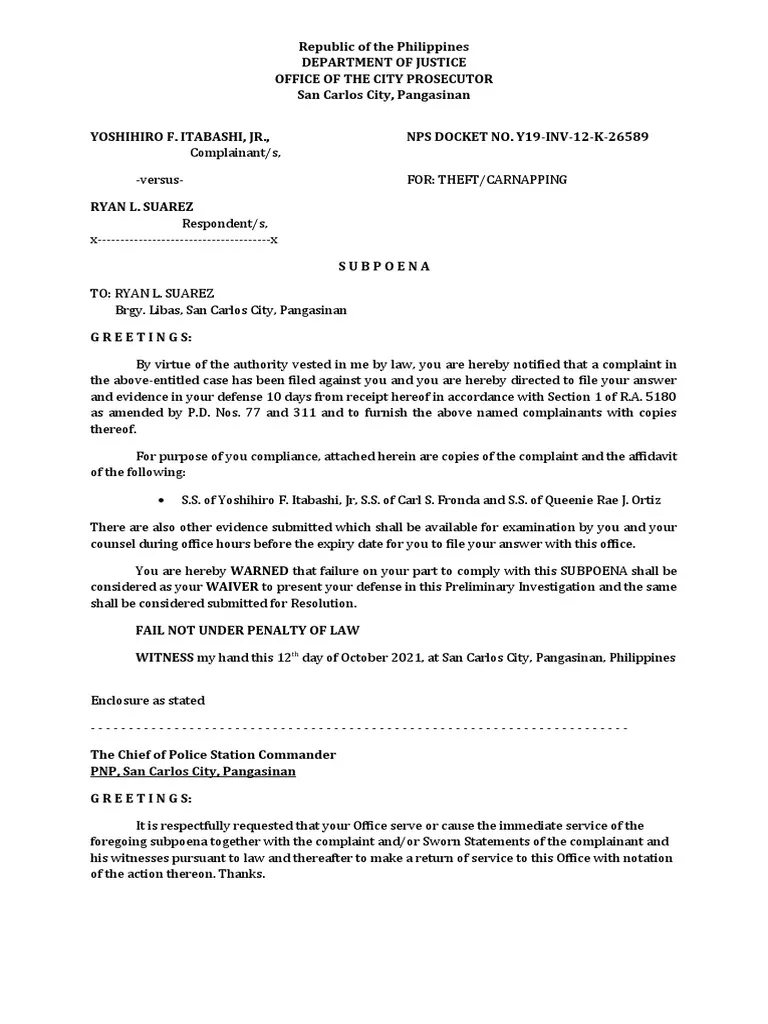What is a Subpoena Cover Letter
A subpoena cover letter is a crucial document in the legal process, serving as a formal introduction to a subpoena. It accompanies the subpoena itself, providing context, instructions, and other essential information to the recipient. Think of it as a friendly, yet professional, explanation of why they’re receiving this legal document. This letter helps to ensure the recipient understands the request and complies appropriately. When written correctly, it can streamline the process and avoid confusion or delays. Mastering the art of writing a subpoena cover letter is an important skill for any legal professional or individual navigating the legal system.
Purpose of a Subpoena Cover Letter
The primary purpose of a subpoena cover letter is to provide clear and concise information about the subpoena. It explains the purpose of the subpoena, what is being requested (documents, testimony, etc.), and the deadline for compliance. It also serves as a point of contact for any questions or concerns the recipient may have. By clearly outlining these details, the cover letter helps to facilitate a smooth and efficient response to the subpoena. A well-crafted cover letter can minimize misunderstandings and ensure the recipient understands their obligations under the law. Without it, confusion, delays, or even legal challenges could arise.
Key Elements of a Subpoena Cover Letter
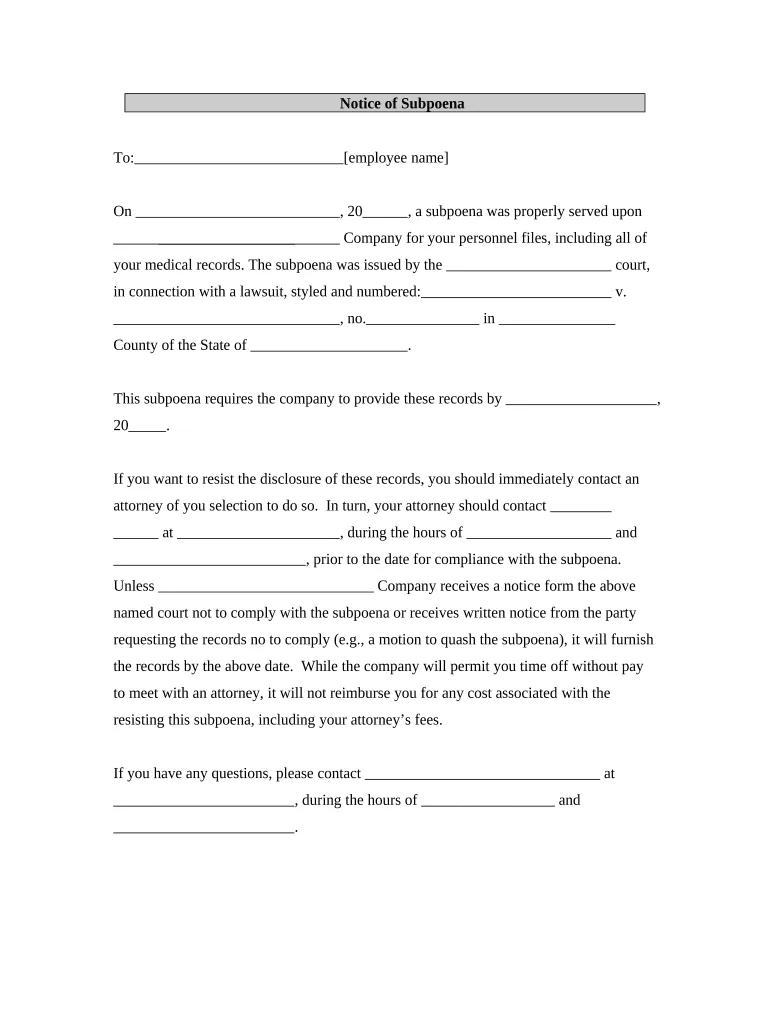
A successful subpoena cover letter needs to include specific elements for it to be effective. These key components help ensure the recipient understands the request and the necessary steps for compliance. Omitting these elements could lead to confusion or legal challenges, so it’s important to get it right. Structuring the letter correctly is just as important, as it can make the information easier for the recipient to digest. Each component plays a vital role in communicating the purpose of the subpoena and the required actions.
Contact Information
The cover letter should clearly state the sender’s contact information, including their name, title (if applicable), law firm (if applicable), address, phone number, and email address. This information allows the recipient to easily reach out with questions or concerns regarding the subpoena. Providing multiple points of contact, such as both a phone number and an email address, increases the chances of a quick and efficient response. Make sure this information is accurate and up-to-date to avoid any communication barriers. This helps build trust and provides a means to clear up any doubts promptly.
Case Information
The cover letter must identify the case by name, the court where the case is pending, and the case number. This information allows the recipient to quickly understand the context of the subpoena and its relation to ongoing legal proceedings. This is especially critical if the recipient deals with multiple legal cases. Accurate and complete case information prevents any confusion or potential for non-compliance. Additionally, it enables the recipient to find the relevant documents and information associated with the case. This provides the recipient with the necessary background for an informed response.
Document or Information Request
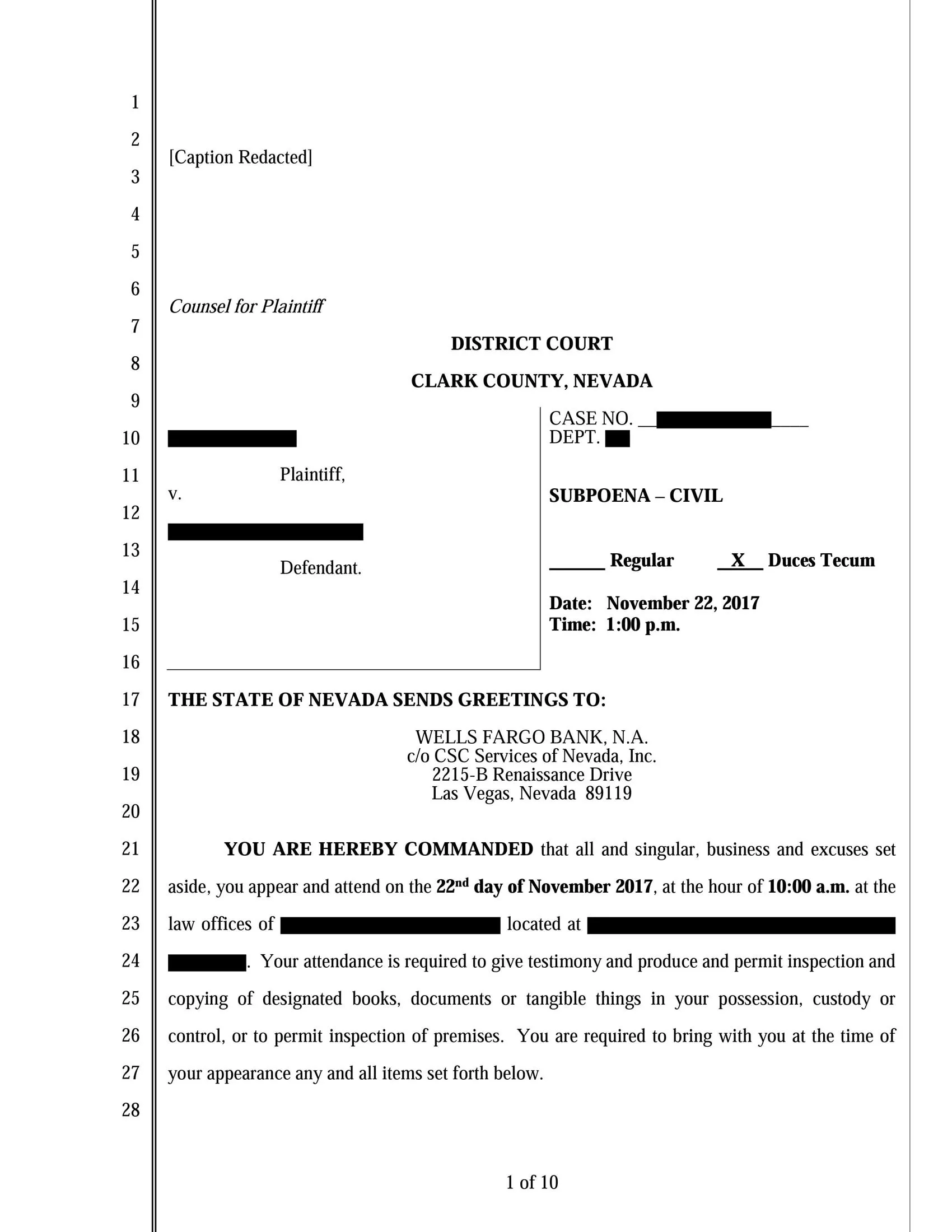
The core of the cover letter is the clear and precise description of what is being requested. This includes identifying the specific documents, records, or testimony sought. Be as detailed as possible to avoid any ambiguity. For instance, if requesting financial records, specify the relevant time period and the types of records needed (e.g., bank statements, tax returns). This clarity prevents any misunderstanding. Avoid overly vague language. The more clarity you can offer, the better the chances of a complete and timely response. Use clear language, avoiding jargon unless it is absolutely necessary and understood by the recipient.
Deadline and Instructions
The cover letter must include a specific deadline for compliance with the subpoena. This date is crucial, as it informs the recipient when the requested information or appearance is due. Alongside the deadline, provide clear instructions on how to comply with the subpoena, specifying the method of delivery (e.g., mail, electronic submission) and the address or location for submission or appearance. Additionally, explain any special instructions, such as how to handle privileged information or any specific formats required. Providing all necessary instructions minimizes confusion and ensures the recipient is well-prepared to meet the legal requirements. The deadline should be reasonable, taking into account the complexity of the request.
Professional Tone and Formatting
Maintain a professional tone throughout the cover letter. Use polite and respectful language, even if the case involves contentious issues. A professional tone builds credibility and shows respect for the recipient. Proper formatting, including the use of a professional font, appropriate margins, and clear paragraph breaks, is also essential. Ensure the letter is well-organized and easy to read. Avoid jargon or overly complex legal language, and keep sentences concise and to the point. The overall presentation of the letter reflects on the sender’s professionalism and attention to detail, which can influence the recipient’s willingness to cooperate. This also demonstrates a commitment to the legal process.
Tips to Make Your Subpoena Cover Letter Win
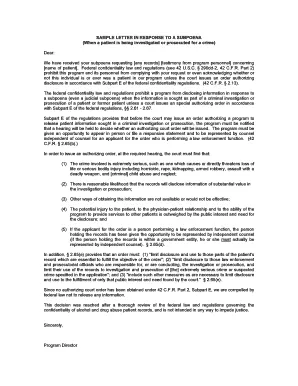
Writing a winning subpoena cover letter requires more than just including the necessary elements; it also involves careful attention to detail and strategic communication. By focusing on these tips, you can significantly improve the effectiveness of your letters and increase the likelihood of a positive outcome. Your goal should be to make the process as easy as possible for the recipient, encouraging compliance and fostering a professional relationship. Effective communication can significantly aid your case.
Be Clear and Concise
Avoid legal jargon and complex sentence structures. Get straight to the point, and clearly articulate what is being requested. Use simple, direct language to ensure the recipient understands their obligations. This makes it easier for the recipient to process the information quickly and reduces the chances of misinterpretation. The letter should be easy to read and digest, which will make a significant difference in the recipient’s willingness to cooperate. Clarity is key when dealing with legal documents, as any ambiguity can lead to misunderstandings or delays.
Use a Professional Tone
Maintain a respectful and professional tone throughout the letter. Avoid accusatory language or any statements that could be perceived as aggressive. The letter should convey a sense of professionalism and respect for the recipient. Even if the case is contentious, keeping a professional tone is essential. This encourages cooperation and compliance. A professional tone demonstrates respect for the legal process and increases the chances of a positive response. Use a respectful tone can influence the recipient’s perception of the request, leading to smoother interactions.
Proofread Carefully
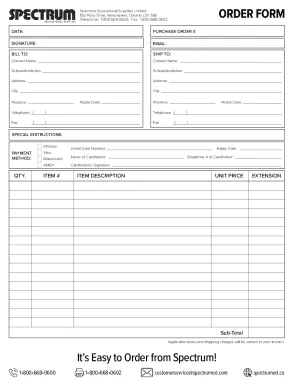
Before sending the cover letter, meticulously proofread it for any errors in grammar, spelling, and punctuation. Even minor errors can undermine your credibility and detract from the professionalism of the letter. Ensure all names, dates, and other details are accurate. Have another person review the letter as well to catch any mistakes you may have missed. Thorough proofreading ensures the letter is clear, accurate, and reflects positively on the sender. A polished cover letter shows that you pay attention to detail, which can build trust and improve the recipient’s perception of your request.
Highlight Key Information
Make the most critical information, such as the deadline and the specific documents or testimony requested, easy to find. Consider using bolding, underlining, or other formatting techniques to draw attention to these key details. This helps the recipient quickly grasp the essential requirements of the subpoena. Highlighting key information ensures the recipient doesn’t miss crucial instructions or deadlines. This practice can significantly improve the chances of the recipient understanding the subpoena’s demands and responding in a timely manner. It increases the likelihood of compliance, and demonstrates that you respect the recipient’s time.
Review the Rules of the Court
Before sending the subpoena cover letter, familiarize yourself with the specific rules of the court where the case is pending. Some courts have specific requirements for subpoena cover letters, such as mandatory formatting guidelines or specific language that must be included. Failing to comply with these rules can lead to the subpoena being rejected or delayed. Check with the court clerk or the court’s website to ensure your letter complies with all the necessary regulations. By following these court guidelines, you ensure the subpoena is legally sound and effectively communicates the request to the recipient. You’re reducing the risk of legal challenges or delays.
Formatting Your Subpoena Cover Letter
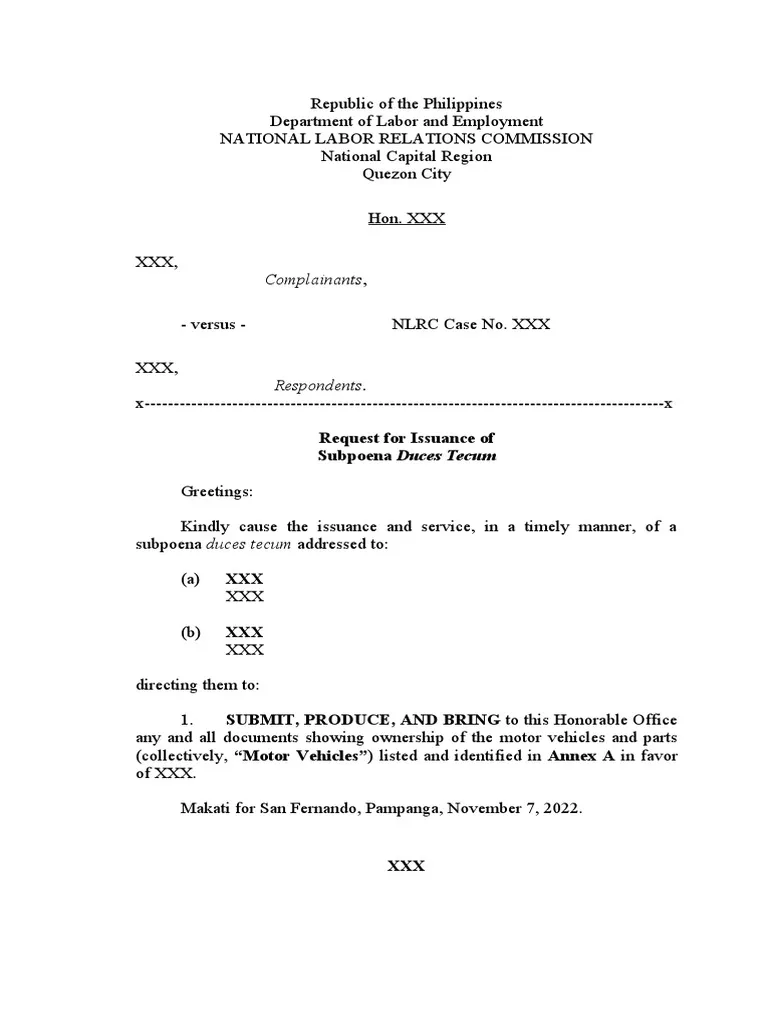
The formatting of your subpoena cover letter contributes significantly to its professionalism and readability. Proper formatting makes it easier for the recipient to understand the contents and to respond appropriately. The overall layout can affect how the recipient perceives the seriousness of the request. Here are some key formatting tips to ensure your letter is clear, concise, and professional.
Font and Margins
Use a standard, professional font like Times New Roman or Arial, with a font size between 11 and 12 points. These fonts are easy to read and create a professional appearance. Maintain consistent margins of at least 1 inch on all sides of the document. This provides sufficient white space and makes the letter less cluttered and more visually appealing. The font and margins are the basis for your letter’s presentation, as they set the tone of your message.
Spacing and Paragraphs
Use single spacing within paragraphs and double spacing between paragraphs. This format enhances readability and allows the reader to easily differentiate between ideas. Keep paragraphs concise and to the point, typically no more than five to seven sentences. This helps to avoid overwhelming the reader with dense blocks of text. Proper spacing improves the overall appearance of the letter, making it more accessible and easier to understand. The spacing should be consistent throughout the entire document to maintain a professional look and feel.
Signature and Contact Information
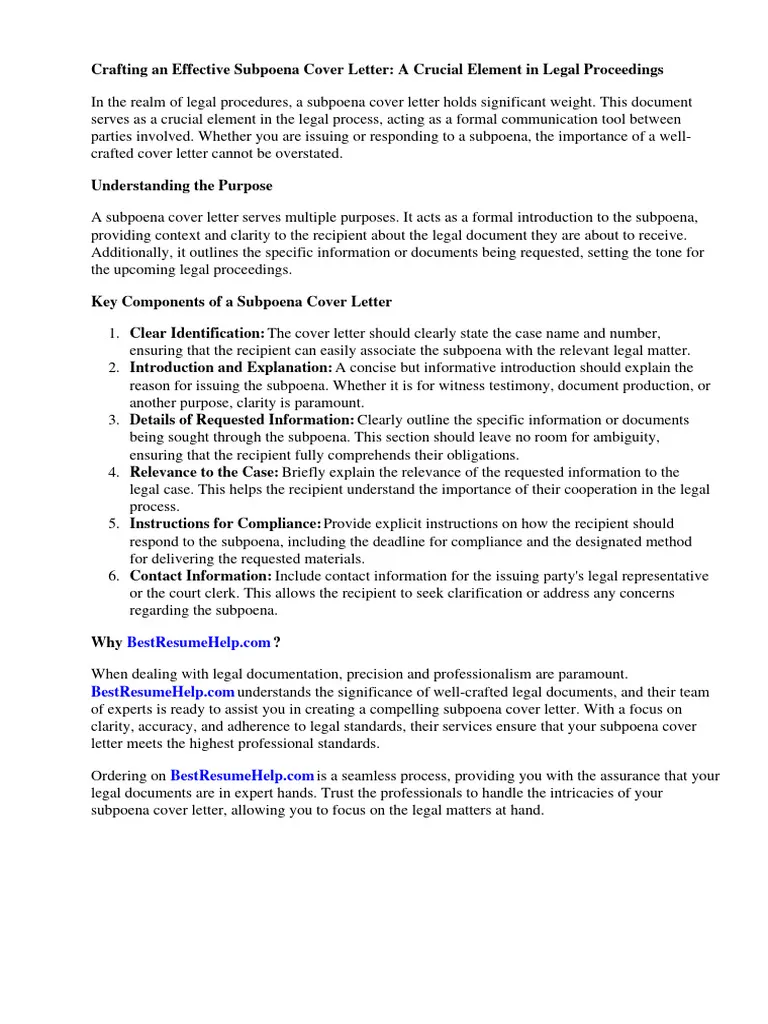
Always include a signature at the end of the letter. If sending the letter electronically, you can scan your signature or use an electronic signature. Below your signature, type your full name, title (if applicable), and contact information. This ensures the recipient can easily identify the sender and reach them if necessary. Including your contact information provides a means of communication for any follow-up questions or clarifications. This helps in fostering professional and timely communication, thus helping your case.
Examples of Subpoena Cover Letters
Reviewing sample subpoena cover letters can provide valuable insights into how to structure and format your own letters. By studying examples, you can understand the different elements and language typically used. These samples can serve as a starting point for creating your own. Adapt the examples to your specific needs while ensuring compliance with legal standards.
Where to Find Templates
Numerous online resources provide sample subpoena cover letter templates. Websites specializing in legal documents, law firms, and legal aid organizations often offer free or paid templates. Look for templates that are tailored to your specific needs. They can simplify the writing process and ensure that you include all the essential information. Using templates saves you time and effort, as well as providing a clear guide. Always ensure the template is up-to-date and complies with the legal requirements of your jurisdiction.
Adapting Templates to Your Needs
When using a template, adapt it to your specific case and circumstances. Replace the placeholder information with the accurate details of your case. Tailor the language to be clear and concise, and ensure it reflects the specific requests of your subpoena. Do not blindly copy a template; instead, customize it to fit your unique needs. Modifying the template with details about your case demonstrates your attention to detail and professionalism. Take the time to make the necessary adjustments to ensure the cover letter meets the requirements of the case and jurisdiction.
Conclusion
Writing an effective subpoena cover letter is a critical skill in the legal field, helping to ensure clear communication and compliance. By following the guidelines, using proper formatting, and tailoring the letter to your specific needs, you can improve the effectiveness of your legal communications. A well-crafted cover letter will not only facilitate the legal process but also demonstrate your professionalism and attention to detail. The effort put into creating a clear and concise subpoena cover letter can make a significant difference in the outcome of your legal matters. Consider the tips and advice, and always seek professional advice if necessary.
